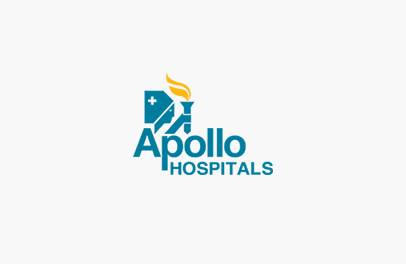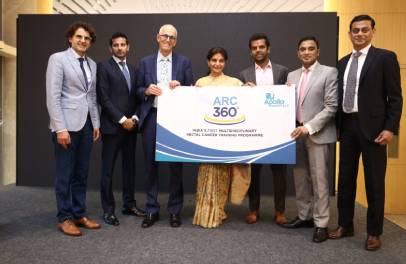Bankart Repair Surgery
Introduction to Bankart Repair Surgery
Shoulder dislocations are a common injury, especially among young athletes. When the shoulder joint repeatedly dislocates, it can cause damage to the labrum (ring of cartilage) lining the shoulder socket. This is known as a Bankart lesion.
Bankart repair surgery is performed to reattach the torn labrum to the shoulder socket and stabilize the joint. It is an effective treatment for recurrent shoulder instability. Advances in arthroscopic techniques have made Bankart repair less invasive, with faster recovery times compared to traditional open surgery.
If you’ve been diagnosed with a Bankart lesion and conservative treatments haven’t helped, your doctor may recommend Bankart repair surgery. Let’s take a closer look at what this procedure involves, who needs it, and what to expect before, during and after the operation.
What is a Bankart lesion (glenoid labrum tear)?
A Bankart lesion is a type of injury that affects the soft tissue in your shoulder, which helps keep it in place. It occurs when your shoulder is dislocated, meaning the top of your upper arm bone (humerus) is pushed out of the front of its socket.
In the shoulder, the humerus fits into a socket in your shoulder blade (scapula). A ring of cartilage known as the glenoid labrum surrounds this socket, helping to stabilize the joint.
When your shoulder is forced out of the socket, it can tear or detach this ring of cartilage, leading to a Bankart lesion. Even though a healthcare provider can pop your shoulder back into place, a Bankart lesion makes your shoulder unstable and more likely to dislocate again in the future.
What is Bankart Repair Surgery?
Bankart repair is a surgical procedure to treat recurrent shoulder dislocations caused by a Bankart lesion. During this procedure, the torn labrum is reattached to the shoulder socket using sutures or small anchors. This restores the normal anatomy and stabilizes the shoulder joint.
Bankart repair can be performed as an open surgery or arthroscopically using small incisions. Arthroscopic Bankart repair is the most common technique today. It is less invasive, with smaller incisions, short recovery times and lower complication rates compared to open surgery.
Types of Bankart Repair
There are two main types of Bankart repair surgery:
1. Arthroscopic Bankart Repair
In this minimally invasive approach, the surgeon uses a tiny camera (arthroscope) and surgical instruments to reattach the labrum. Small incisions are made around the shoulder to insert the arthroscope and repair the torn tissue. Sutures or small anchors are used to reattach the labrum to the glenoid.
2. Open Bankart Repair
Open Bankart repair involves making a larger incision over the front of the shoulder to expose the joint. The surgeon then reattaches the torn labrum to the glenoid using sutures. Open repair may be recommended if there is significant bone loss or if the shoulder has been dislocated many times.
Who Needs Bankart Repair Surgery?
Bankart repair is typically recommended for patients who have recurrent shoulder dislocations or subluxations (partial dislocations) due to a Bankart lesion. The most common symptoms include:
- Recurring shoulder dislocations, especially with overhead activities or contact sports
- Shoulder instability or “giving way”
- Pain with overhead activities
- Limited shoulder range of motion
Bankart repair may be considered if the following criteria are met:
- At least two documented shoulder dislocations
- Positive findings on physical exam (apprehension, relocation tests)
- MRI or CT scan confirming a Bankart lesion
- Failure to improve with conservative treatment (physical therapy, activity modification, anti-inflammatory medication)
Patients with significant bone loss on the glenoid or humeral head (Hill-Sachs lesion) may not be good candidates for isolated Bankart repair. In these cases, additional procedures like Remplissage or bone grafting may be needed to restore stability.
Why is Bankart Repair Performed?
The main goals of Bankart repair surgery are to:
- Reattach the torn labrum to the glenoid to restore normal shoulder anatomy
- Stabilize shoulder joint and prevent future dislocations
- Relieve pain and restore full shoulder function
By repairing the Bankart lesion, Bankart repair surgery aims to restore normal bumper effect of the labrum. This helps keep the humeral head centered in the glenoid socket during shoulder motion.
Bankart repair is an effective treatment for recurrent shoulder instability. Research show it can reduce the risk of future dislocations and improve patient-reported outcomes and satisfaction. Patients are typically able to return to sports and other activities after completing a rehabilitation program.
What to Expect Before Bankart Repair Surgery
Before scheduling Bankart repair, your orthopedic surgeon will perform a thorough evaluation. This typically includes:
- Medical history and physical exam
- X-rays of the shoulder to assess for bone loss
- MRI or CT scan to confirm the Bankart lesion and look for other injuries
- Discussion of treatment options, including conservative management vs. surgery
Your surgeon will explain the risks and benefits of Bankart repair and make sure you understand what to expect before, during and after the procedure. Be sure to discuss any questions or concerns you may have.
In the days leading up to surgery, you may need to:
- Undergo additional tests like blood work and ECG
- Stop taking certain medicines that increase bleeding risk
- Avoid eating/drinking after midnight – the night before surgery
- Arrange for someone to drive you back home after surgery
What Happens During Bankart Repair Surgery?
Bankart repair is typically performed as a procedure under general anesthesia. The surgery usually takes 1-2 hours to complete. Here’s a step-by-step overview of what happens:
- Anesthesia: You will receive general anesthesia to put you in a deep sleep. A nerve block may also be administered to numb the shoulder and provide pain relief after surgery.
- Positioning: You will be positioned on your side with your arm hanging free. This allows the surgeon to easily access the shoulder joint.
- Arthroscopic evaluation: The surgeon makes small incisions around the shoulder and inserts the arthroscope to evaluate the extent of the Bankart lesion and look for other injuries.
- Labrum repair: Small suture anchors are drilled into the glenoid. The torn labrum is reattached to the glenoid using sutures passed through the anchors.
- Closure: The small incisions are closed with stitches or steri-strips. A sterile dressing is applied to the shoulder.
After the surgery, you will be taken to the recovery room to wake up from anaesthesia. Your shoulder will be immobilized in a sling. Once you are stable, you will be discharged home with instructions for post-operative care and rehabilitation.
What to Expect After Bankart Repair Surgery
After Bankart repair, you can expect some pain, swelling and stiffness in the shoulder. Pain medicines will be prescribed to keep you comfortable. Ice and elevation are also helpful in reducing swelling.
You will need to wear a sling for 4-6 weeks after surgery to protect the repair as it heals. Gentle range-of-motion exercises will be started early on to prevent stiffness. More intensive physical therapy typically begins 4-6 weeks after surgery.
The full recovery process takes several months. Most patients can return to light activities like walking and stationary cycling within a few weeks. More strenuous activities like sports are usually allowed 4-6 months after surgery, once the shoulder has fully healed and you have completed physical therapy.
Risks and Complications of Bankart Repair
As with any surgery, Bankart repair carries some risks. Potential complications include:
- Infection
- Bleeding or blood clots
- Nerve injury
- Shoulder stiffness (frozen shoulder)
- Failure of the repair (recurrent instability)
The risk of complications is low, especially with arthroscopic Bankart repair. Infection and nerve injury occur in less than 1% of cases. Recurrent instability is the most common complication, occurring in 5-10% of patients.
Factors that increase the risk of recurrent instability include:
- Young age (under 20)
- High-demand sports (contact/collision sports)
- Significant bone loss
- Poor compliance with physical therapy
Your surgeon will discuss your individual risk factors and take steps to minimize complications, such as using antibiotic prophylaxis and meticulous surgical technique.
Benefits of Bankart Repair Surgery
Bankart repair offers several potential benefits for patients with recurrent shoulder instability:
- Reduced risk of future shoulder dislocations
- Improved shoulder stability and function
- Relief of pain and discomfort
- Return to sports and other activities
- High patient satisfaction rates
Studies show that Bankart repair can reduce the risk of recurrent instability by 90% or more. Most patients regain full shoulder motion and strength after completing physical therapy. Satisfaction rates are very high, with over 90% of patients reporting they would have the surgery again.
Frequently Asked Questions
How long does Bankart repair surgery take?
Bankart repair typically takes 1-2 hours to complete. The exact duration depends on the complexity of the case and whether it is performed arthroscopically or as an open procedure.
How long is the hospital stay after Bankart repair?
Bankart repair is usually performed as an outpatient procedure. Most patients can go home the same day once they have recovered from anesthesia. An overnight stay may be required in some cases.
When can I return to sports after Bankart repair?
Most patients can return to sports 4-6 months after Bankart repair, once the shoulder has fully healed and you have completed physical therapy. Your surgeon and physical therapist will determine the appropriate time to return to sports based on your progress.
What is the success rate of Bankart repair?
Studies show that Bankart repair is successful in reducing the risk of recurrent shoulder instability in 90-95% of patients. Factors like age, activity level and bone loss can impact the success rate.
Is Bankart repair painful?
You can expect some pain after Bankart repair, especially in the first few days. Pain medication will be prescribed to keep you comfortable. Ice, elevation and gentle exercises can also help reduce pain as you recover.
Why Choose Apollo Hospitals for Bankart Repair Surgery?
Apollo Hospitals is a pioneer in healthcare in India, offering world-class treatment for shoulder instability and other orthopedic conditions. Our team of experienced orthopedic surgeons are experts in performing arthroscopic Bankart repair using the latest techniques and technologies.
Some key reasons to choose Apollo for your Bankart repair surgery:
- Highly skilled, fellowship-trained shoulder specialists
- State-of-the-art facilities equipped with advanced arthroscopic equipment
- Proven track record of successful outcomes and low complication rates
- Comprehensive rehabilitation services to optimize your recovery
- Compassionate, patient-centered care from diagnosis through treatment and beyond
At Apollo, we understand that undergoing surgery can be stressful. Our team is committed to offer you with the highest level of care and support every step of the way. We will work closely with you to develop a personalized treatment plan and ensure you have the best possible experience and outcome.
Conclusion
Bankart repair is an effective treatment for recurrent shoulder instability caused by a Bankart lesion. Arthroscopic techniques have made this procedure less invasive, with faster recovery times compared to traditional open surgery. If you have been diagnosed with a Bankart lesion and conservative treatments have not provided relief, Bankart repair may be an option worth considering. The procedure aims to restore normal shoulder anatomy, stabilize the joint, and allow you to return to your active lifestyle.
At Apollo Hospitals, our team of shoulder specialists have extensive experience performing arthroscopic Bankart repair using the latest techniques. We are committed to offer you the highest level of care and support all through your treatment journey. Contact us today to learn more about Bankart repair and how we can help you get back to the activities you enjoy.
UPDATED ON 03/09/2024
Apollo Highlights & Updates
 Apollo Hospitals takes up a 4.5-Hour Stroke Treatment Promise with Advanced Stroke Care Network with Extended 24-Hour Tr...
Apollo Hospitals takes up a 4.5-Hour Stroke Treatment Promise with Advanced Stroke Care Network with Extended 24-Hour Tr...© Copyright 2024. Apollo Hospitals Group. All Rights Reserved.
 +91 8069991061
Book Health Check-up
+91 8069991061
Book Health Check-up








